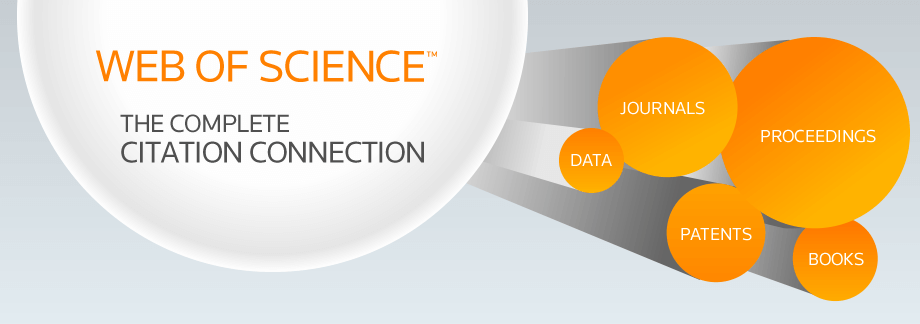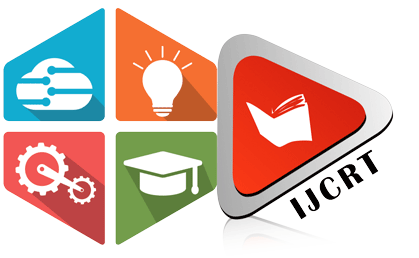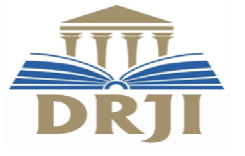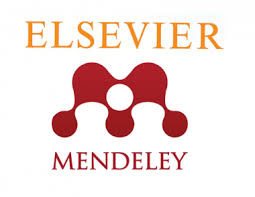INTERNATIONAL JOURNAL OF CREATIVE RESEARCH THOUGHTS - IJCRT (IJCRT.ORG)
International Peer Reviewed & Refereed Journals, Open Access Journal
IJCRT Peer-Reviewed (Refereed) Journal as Per New UGC Rules.
ISSN Approved Journal No: 2320-2882 | Impact factor: 7.97 | ESTD Year: 2013
Call For Paper - Volume 13 | Issue 11 | Month- November 2025
Scholarly open access journals, Peer-reviewed, and Refereed Journals, Impact factor 7.97 (Calculate by google scholar and Semantic Scholar | AI-Powered Research Tool) , Multidisciplinary, Monthly, Indexing in all major database & Metadata, Citation Generator, Digital Object Identifier(CrossRef DOI)
Contact Us Click Here
WhatsApp Contact Click Here
Volume 11 | Issue 9
| IJCRT Journal front page | IJCRT Journal Back Page |
Paper Title: Creating Emu Skeleton: From Carcass To Museum Specimen
Publisher Journal Name: IJCRT
Your Paper Publication Details:
Published Paper ID: - IJCRT2309369
Register Paper ID - 243994
Title: CREATING EMU SKELETON: FROM CARCASS TO MUSEUM SPECIMEN
Author Name(s): Roop Kiran, Neelam Bansal, Anuradha Gupta, Varinder Uppal
Publisher Journal name: IJCRT
Volume: 11
Issue: 9
Pages: d175-d179
Year: September 2023
Downloads: 329
Abstract
The skeleton of emu was prepared from the carcass waste of emu presented in the postmortem Hall of Guru Angad Dev Veterinary & Animal Sciences University, Ludhiana. Sequential steps involved were hot water maceration, degreasing, bleaching, categorization of bones, articulation and labelling of skeleton. The skin, adipose tissue and muscles were removed from bones. Bones were boiled in a container of hot water followed by removal of flesh collected on top of container. Further the bones were scrapped, scrubbed and simmered in borax to disintegrate collagen and cartilage. Later, bones were degreased using xylene and washed in detergent and dried at room temperature. To make bones brighter and whiter they were bleached using 3-6% solution of hydrogen peroxide. Different bones were identified and separated into axial and appendicular skeleton. The bones were then articulated on wooden stand with wires in proper position to form skeleton. The skeleton was varnished to increase the shelf life and aesthetic appearance. The present study concluded that the postmortem waste can be used as museum specimen and can also be used for teaching, research and extension work. This is the most economical, efficient and rapid method for utilization of postmortem waste as a museum specimen.
Licence: creative commons attribution 4.0
License
Paper Title: Exploring the Effect of Bullying on Adolescents' Depression: A Comprehensive Analysis
Publisher Journal Name: IJCRT
Your Paper Publication Details:
Published Paper ID: - IJCRT2309368
Register Paper ID - 244132
Title: EXPLORING THE EFFECT OF BULLYING ON ADOLESCENTS' DEPRESSION: A COMPREHENSIVE ANALYSIS
Author Name(s): Shreejeeta Kargupta, Dr. Samapika Das Biswas, Deboleena Chakraborty, Dr. Bonani Chakrabarty
Publisher Journal name: IJCRT
Volume: 11
Issue: 9
Pages: d168-d174
Year: September 2023
Downloads: 275
Abstract
This study was conducted to make an in-depth analysis of the correlation between bullying and depression in adolescents. Various research papers and case studies have been examined. The purpose of the study is to determine the impact of bullying and depression on adolescents. The collective evidence from the various research papers and case studies brings out the severe impact of bullying on the mental health of children and adolescents leading to adolescent depression. The study also highlighted various factors like gender differences, socioeconomic status, suicidality etc. within the context of bullying and depression. This study also enlightens on various important interventions which can assist in resolving this pressing issue. The research addresses the urgency of interventions and various preventive strategies, which would help to reduce the adverse effects of bullying on psychological wellbeing of children and adolescents. Hence, this study aspires to promote a healthier and happier life for future generations.
Licence: creative commons attribution 4.0
License
Keywords
Bullying, Anxiety, Adolescent Depression, Anxiety, Cyberbullying, Traditional Bullying, Gender Disparity, Schools.
License
Paper Title: Review of Green Inventory Models
Publisher Journal Name: IJCRT
Your Paper Publication Details:
Published Paper ID: - IJCRT2309367
Register Paper ID - 244133
Title: REVIEW OF GREEN INVENTORY MODELS
Author Name(s): SAJIKUMAR S
Publisher Journal name: IJCRT
Volume: 11
Issue: 9
Pages: d159-d167
Year: September 2023
Downloads: 347
Abstract
A green inventory model is a type of inventory management approach that considers environmental factors such as waste reduction, reduction of carbon emissions, reduction of pollution, and sustainability. It involves optimizing the inventory system to reduce its impact on the environment while still meeting customer demand and maximizing profit. Green inventory models can include considerations such as minimizing transportation distances, reducing packaging waste, using renewable energy sources, and choosing sustainable suppliers. This review contains various works related to the green inventory model.
Licence: creative commons attribution 4.0
License
Keywords
Sustainability, green inventory model, environment, emission cost.
License
Paper Title: Privatization, State and Response of Marginalized Groups of India
Publisher Journal Name: IJCRT
Your Paper Publication Details:
Published Paper ID: - IJCRT2309366
Register Paper ID - 244119
Title: PRIVATIZATION, STATE AND RESPONSE OF MARGINALIZED GROUPS OF INDIA
Author Name(s): Dr. Iranna Mulgund
Publisher Journal name: IJCRT
Volume: 11
Issue: 9
Pages: d155-d158
Year: September 2023
Downloads: 381
Abstract
There is complex relationship between privatization and changing fate of marginalized communities. In different countries and different parts of the globe LPG in general and privatization in particular has made different impacts. As far our knowledge is concerned liberalization, globalization and privatization throughout the humanity has benefitted the educated, skilled, men and almost all people living in the western countries. Even in these developed countries the poor, unskilled, women, migrants and racial minorities have remained outside the benefits of LPG. The basic and vital sectors namely education and health care have suffered because of privatization. Deprivation from education and essential 21st century skills can definitely promote the culture of poverty among the poor, while privatization of health care sector can affect the longevity and health status of the poor and even lower middle class people. This paper examines the impact of privatization on marginal communities of India comprising of SCs, STs, women, small farmers, poor etc and seeks to explode on myth propagated by western countries regarding the benefits of privatization.
Licence: creative commons attribution 4.0
License
Keywords
Privatization, Policy initiatives, State Intervention, Globalization, Liberalization, Health sector.
License
Paper Title: Past as an Alibi for Reclusive Nature in Fangirl
Publisher Journal Name: IJCRT
Your Paper Publication Details:
Published Paper ID: - IJCRT2309365
Register Paper ID - 244001
Title: PAST AS AN ALIBI FOR RECLUSIVE NATURE IN FANGIRL
Author Name(s): Dr.R.Nivedhita, Ms.B.Namitha
Publisher Journal name: IJCRT
Volume: 11
Issue: 9
Pages: d140-d154
Year: September 2023
Downloads: 274
Abstract
Children often tend to blame their parents, their past experiences or childhood trauma for their behavioral pattern. But this research paper is to prove otherwise and to throw light on the other side of the coin that how they play this blame game to justify their actions. Children who rely on their past experiences are subjected to prove unsuccessful in their future. The state of being gaiety relies upon each individual rather than his distressing experiences in the past.
Licence: creative commons attribution 4.0
License
Keywords
Past experience, distress, behavioral pattern, Childhood trauma
License
Paper Title: CENTRAL BANK DIGITAL CURRENCY (CBDCs)
Publisher Journal Name: IJCRT
Your Paper Publication Details:
Published Paper ID: - IJCRT2309364
Register Paper ID - 244118
Title: CENTRAL BANK DIGITAL CURRENCY (CBDCS)
Author Name(s): Ms. Charu Yadav
Publisher Journal name: IJCRT
Volume: 11
Issue: 9
Pages: d134-d139
Year: September 2023
Downloads: 259
Abstract
Central bank digital currencies (CBDCs) refer to a type of digital currency that is authorized and issued by the central bank of a country. They share similarities with cryptocurrencies, except that their worth is determined by the central bank and is equal to the national fiat currency. Central bank digital currencies are a cause of concern. Additional research is needed to explore the limited comprehension of CBDCs. This research should not only examine the economic reasoning behind CBDCs but also analyze their effects on various aspects such as monetary policy transmission, financial stability, price stability, inflation, unconventional monetary instruments, central banks acting as lenders of last resort, and the provision of forward guidance. There are still unresolved inquiries related to ethical concerns, privacy issues, and limitations posed by the environment and technology. It is crucial to investigate these matters with the upcoming introduction of CBDCs.
Licence: creative commons attribution 4.0
License
Keywords
Central bank digital currencies, Cryptocurrencies, Monetary policy, Financial stability, Financial Ethics
License
Paper Title: Transcending Mortality: Exploring the Quest for a Higher Existence in W.B. Yeats' "Sailing to Byzantium"
Publisher Journal Name: IJCRT
Your Paper Publication Details:
Published Paper ID: - IJCRT2309363
Register Paper ID - 244116
Title: TRANSCENDING MORTALITY: EXPLORING THE QUEST FOR A HIGHER EXISTENCE IN W.B. YEATS' "SAILING TO BYZANTIUM"
Author Name(s): Dr Parneet Jaggi
Publisher Journal name: IJCRT
Volume: 11
Issue: 9
Pages: d126-d133
Year: September 2023
Downloads: 427
Abstract
"Sailing to Byzantium" takes readers on a metaphorical voyage, intertwining the physical and spiritual realms to illuminate the human desire for immortality and an eternal existence. Through rich imagery, symbolism, and a masterful use of poetic techniques, Yeats crafts a captivating narrative that resonates deeply with readers. This paper aims to delve into the theme of transcendence within the poem, uncovering the various literary devices and imagery employed by Yeats to convey the speaker's quest for a higher state of being. The study analyzes the theme of transcendence in "Sailing to Byzantium" by exploring the poem's imagery, symbolism, and the use of literary devices. We will examine the speaker's yearning for a spiritual transformation, his fascination with the eternal world symbolized by Byzantium, and the juxtaposition of aging mortality against timeless art. Additionally, it delves into the historical and cultural context of the poem, considering Yeats' influences from Irish mythology, the occult, and his fascination with Byzantine art. By dissecting Yeats' poem and examining its intricacies, this study aims to shed light on the profound exploration of transcendence and its enduring significance within Yeats' broader body of work. Through this analysis, we hope to gain a deeper understanding of the poem's timeless appeal, as well as its contribution to the landscape of modern poetry. Join us on this intellectual voyage as we embark on a journey into the depths of Yeats' "Sailing to Byzantium."
Licence: creative commons attribution 4.0
License
Keywords
Transcending Mortality: Exploring the Quest for a Higher Existence in W.B. Yeats' "Sailing to Byzantium"
License
Paper Title: "A STUDY TO ASSESS THE PREVALENCE OF SHOPAHOLIC AMONG THE STUDENTS OF SELECTED COLLEGES, TIRUPATI "., ANDHRAPRADESH.
Publisher Journal Name: IJCRT
Your Paper Publication Details:
Published Paper ID: - IJCRT2309362
Register Paper ID - 244050
Title: "A STUDY TO ASSESS THE PREVALENCE OF SHOPAHOLIC AMONG THE STUDENTS OF SELECTED COLLEGES, TIRUPATI "., ANDHRAPRADESH.
Author Name(s): JANA SIVA SESHA SAI KUMAR, DR.S.HEMALATHA, DR.M.BHAGYALAKSHMI
Publisher Journal name: IJCRT
Volume: 11
Issue: 9
Pages: d111-d125
Year: September 2023
Downloads: 281
Abstract
A shopaholic is a person considered to be addicted to shopping otherwise known as shopping addiction, A slang term for Compulsive Shopping also known as Compulsive buying disorder or pathological buying disorder, is a mental health condition characterized by the persistent, excessive, impulsive, and uncontrollable purchase of products in spite of severe psychological, social, occupational, financial consequences is characterized by an obsession with shopping and buying behaviour that causes adverse consequences. Persons with CBD are preoccupied with shopping and spending, and devote significant time to these behaviours. The consequences of compulsive buying, which may persist long after a spree, can be devastating, with marriages, long-term relationships, and jobs all feeling the strain. The most effective treatment is to attend therapy and group work in order to prevent continuation of this addiction. Objectives1. To assess the prevalence of shopaholic among college students. 2. To associate the level of shopaholic with selected demographic variables among college students. college students.MethodologyA descriptive design was employed by using Non probability convenient sampling technique. Data was collected from 100 students of undergraduate students at S.V college, Tirupati. Data analysis consisted of descriptive and inferential statistics. Results In this study out of 100 undergraduate students 34(34 %) have the prevalence of shopaholic and remaining 66(66%) are not. The prevalence was associated with demographic variables like education of mother, monthly income of father, monthly family income were statistically significant at 0.01 level whereas age, type of family, type of living area, socio economic class were statistically significant at 0.05 level and remaining were statistically not showing any significant association. ConclusionThe study concluded that there is significant association on prevalence of shopaholic related to age, type of family, type of living area, and socioeconomic, education of the mother, monthly income of the father, monthly family income whereas gender, religion, education of the father, monthly income of the mother, marital status, occupation of the father and occupation of the mother were statistically not showing any significant association. Awareness programmes should be conducted to the school and graduate with different area. The present study finding serve as a basis for the professionals to conduct further studies on shopaholic disorder. Awareness programmes should be conducted to the school and graduate with different area and also can conduct same study with different variables on a large sample.
Licence: creative commons attribution 4.0
License
Keywords
"A STUDY TO ASSESS THE PREVALENCE OF SHOPAHOLIC AMONG THE STUDENTS OF SELECTED COLLEGES, TIRUPATI "., ANDHRAPRADESH.
License
Paper Title: Cyber crime investigation in India vs. Australia
Publisher Journal Name: IJCRT
Your Paper Publication Details:
Published Paper ID: - IJCRT2309361
Register Paper ID - 244000
Title: CYBER CRIME INVESTIGATION IN INDIA VS. AUSTRALIA
Author Name(s): Manisha Guleria
Publisher Journal name: IJCRT
Volume: 11
Issue: 9
Pages: d103-d110
Year: September 2023
Downloads: 250
Abstract
The internet is the essence of life in the 21st century. With the development in technology, the internet has become more intertwined with our lives than we can think of. Cyber Security plays an important role in the field of information technology. Securing the information has become one of the biggest challenges in the present day. Nowadays when people think about cyber security, the next thing that comes to their mind is cybercrimes, which have increased massively day to day. Cybercrime is criminal activity that either targets or uses a computer, a computer network or a networked device. Cybercrime is a serious threat nowadays. The paper examines the various forms of cybercrimes, cybercrimes in India and Australia. It also includes cybercrimes from the aspect of international laws and Cyber Security Measures for Organizations to Prevent Cyber Attacks
Licence: creative commons attribution 4.0
License
Keywords
Cyber crime investigation in India vs. Australia
License
Paper Title: Self-Concept an Important Determinant of Academic Achievement
Publisher Journal Name: IJCRT
Your Paper Publication Details:
Published Paper ID: - IJCRT2309360
Register Paper ID - 243988
Title: SELF-CONCEPT AN IMPORTANT DETERMINANT OF ACADEMIC ACHIEVEMENT
Author Name(s): Debasish Das, Dr. Debashis Dhar
Publisher Journal name: IJCRT
Volume: 11
Issue: 9
Pages: d87-d102
Year: September 2023
Downloads: 282
Abstract
The academic achievement of students is a fundamental concern for educators, parents, policymakers, and researchers alike. Achieving excellence in education not only benefits individuals but also contributes to societal progress. In this pursuit of academic success, various factors have been identified as crucial determinants, ranging from teaching methodologies to learning environments. Among these factors, the role of self-concept in shaping academic achievement has gained considerable attention in recent years. A positive self-concept encourages resilience, adaptability, and a growth mindset, nurturing individuals who are better equipped to face challenges both inside and outside the classroom. Parents play a pivotal role in shaping a child's self-concept. The study's findings can provide parents with valuable insights into how to nurture self-confidence, support their children's learning journeys, and contribute to their overall well-being. In this study, thematic analysis serves as the chosen methodology to delve into the nuances of how self-concept acts as a determinant of academic achievement. The methodology involves identifying, analyzing, and interpreting recurring patterns or themes within qualitative data. By employing strategies that nurture self-esteem, resilience, and a growth mindset, educators can create classroom environments where students feel empowered to learn and excel. Similarly, parents' unwavering support, belief in their children's potential, and provision of nurturing environments are instrumental in fostering positive self-concepts that translate into academic success.
Licence: creative commons attribution 4.0
License
Keywords
Self Concept, Academic Achievement, Parents, Teachers, Self-Efficacy
License
Paper Title: A SECURE FRAME WORK FOR GOVERNMENT TENDER ALLOCATION USING BLOCK CHAIN
Publisher Journal Name: IJCRT
Your Paper Publication Details:
Published Paper ID: - IJCRT2309359
Register Paper ID - 243178
Title: A SECURE FRAME WORK FOR GOVERNMENT TENDER ALLOCATION USING BLOCK CHAIN
Author Name(s): Dr.R.Palson Kennedy, K.Varalakshmi, S.S.Vasantha Raja, A.Vijayanarayanan, B.Priya
Publisher Journal name: IJCRT
Volume: 11
Issue: 9
Pages: d79-d86
Year: September 2023
Downloads: 266
Abstract
Block chain technology is an advanced database mechanism that allows transparent information sharing within a business network. It stores data in block that are linked together in a chain. It most safe,secure and fast. Our project is to create web application to the people who lodge a complaints to the government regarding common problems. The complaint where move to the respective departments and the problem which can be solved were hold and report back to the government. The government will allocate the tender to the contractors the satisfying coded amount is chosen then transactions starts more secure using block chain technology.
Licence: creative commons attribution 4.0
License
Keywords
A SECURE FRAME WORK FOR GOVERNMENT TENDER ALLOCATION USING BLOCK CHAIN
License
Paper Title: AI BASED SPAM SPOILER FOR PUBLIC AND PRIVATE E-MAIL SERVICES
Publisher Journal Name: IJCRT
Your Paper Publication Details:
Published Paper ID: - IJCRT2309358
Register Paper ID - 243181
Title: AI BASED SPAM SPOILER FOR PUBLIC AND PRIVATE E-MAIL SERVICES
Author Name(s): S.S.Vasantha Raja, A.Vijayanarayanan, B.Priya, C.Kalaiarasi, R.Savithiri
Publisher Journal name: IJCRT
Volume: 11
Issue: 9
Pages: d70-d78
Year: September 2023
Downloads: 266
Abstract
In recent years, cyber security incidents have occurred frequently. In most of these incidents, attackers have used different type of spam email as a knock-on to successfully invade government systems, well-known companies, and websites of politicians and social organizations in many countries. The detection of spam mail from big email data has been paid public attention. However, the camouflage technology of spam mail is becoming more and more complex, and the existing detection methods are unable to confront with theincreasingly complex deception methods and the growing number of email. In this project, we proposed to design a novel efficient approach named Spam Spoiler for big e-mail data classification into four different classes: Normal, Fraudulent, Harassment, and Suspicious E-mails by using LSTM based GRU. The new method includes two important stages, sample expansion stage and testing stage under sufficient samples. This project The LSTM based GRU efficiently captures meaningful information from E-mails that can be used for forensic analysis as evidence. Experimental results revealed that Spam Spoiler performed better than existing.ML algorithms and achieved a classification accuracy of 98% using the novel technique of LSTM with recurrent gradient units. As different types of topics are discussed in E-mail content analysis. Spam Spoiler effectively outperforms existing methods while keeping the classification process robust and reliable.
Licence: creative commons attribution 4.0
License
Keywords
AI BASED SPAM SPOILER FOR PUBLIC AND PRIVATE E-MAIL SERVICES
License
Paper Title: A SMART ROBOT FOR INSPECTION IN DISASTER AREAS
Publisher Journal Name: IJCRT
Your Paper Publication Details:
Published Paper ID: - IJCRT2309357
Register Paper ID - 243180
Title: A SMART ROBOT FOR INSPECTION IN DISASTER AREAS
Author Name(s): K.Varalakshmi, V.Dharma Prakash, A.Vijayanarayanan, B.Priya, S.S.Vasantha Raja
Publisher Journal name: IJCRT
Volume: 11
Issue: 9
Pages: d63-d69
Year: September 2023
Downloads: 285
Abstract
Robots can play an important role in recovery operations that present considerable dangers for human rescue teams, such as after chemical explosion and fire explosion. However, the robots currently used are limitedin their ability to interact and cooperate with humans byusing three sensors. This paper introduces a framework for the rescue robot development and control. Humans can be used for rescuing people in these areas, but due tohigh risk of building collapses it is not possible to send human rescue teams in these areas. Thus affordable high technology equipment which makes this risky job quicker and safer is needed for the hour, which has beendescribed in this paper.
Licence: creative commons attribution 4.0
License
Keywords
Arduino Uno Microcontroller, Zigbee, Temperature sensor, gas sensor, MEMS sensor, buzzer, Robot mechanism, ESP32 Modulo (Board)
License
Paper Title: Contact Tracing using Machine Learning
Publisher Journal Name: IJCRT
Your Paper Publication Details:
Published Paper ID: - IJCRT2309356
Register Paper ID - 243184
Title: CONTACT TRACING USING MACHINE LEARNING
Author Name(s): C.Kalaiarasi, Priya.B, S.R.Noble Lourdhu Raj, S.Duraimurugan, D.Vidhya
Publisher Journal name: IJCRT
Volume: 11
Issue: 9
Pages: d52-d62
Year: September 2023
Downloads: 341
Abstract
Contact tracing is a critical tool in the fight against infectious diseases, including the ongoing COVID-19 pandemic. Traditional contact tracing methods involve manually identifying and notifying individuals who have come into contact with an infected person. However, with the increasing scale of outbreaks, manual contact tracing has become increasingly difficult and time-consuming. Machine learning can help automate and enhance the contact tracing process. In this context, ML algorithms can analyze large volumes of data to identify potential transmission chains, predict the likelihood of an individual being infected, and prioritize high-risk individuals for testing and isolation. This paper presents an overview of recent research on contact tracing using machine learning. The paper covers ML techniques and their applications that involve Clustering and DBSCAN Algorithms and Proximity Graph. Additionally, the paper discusses the challenges and ethical considerations associated with using ML in contact tracing, such as data privacy and bias. Overall, this paper highlights the potential of ML to improve the effectiveness and efficiency of contact tracing, ultimately helping to curb the spread of infectious diseases.
Licence: creative commons attribution 4.0
License
Keywords
contact tracing, outbreaks, transmission chains, isolation, clustering and db scan algorithm
License
Paper Title: DEVELOPING A GESTURE BASED VIDEO CALLING FOR DEAF AND MUTE PEOPLE USING MICROSOFT KINCET
Publisher Journal Name: IJCRT
Your Paper Publication Details:
Published Paper ID: - IJCRT2309355
Register Paper ID - 243185
Title: DEVELOPING A GESTURE BASED VIDEO CALLING FOR DEAF AND MUTE PEOPLE USING MICROSOFT KINCET
Author Name(s): R.Savithiri, B.Priya, C.Kalaiarasi, K.Varalakshmi, V.Dharma Prakash
Publisher Journal name: IJCRT
Volume: 11
Issue: 9
Pages: d43-d51
Year: September 2023
Downloads: 271
Abstract
In recent year, there has been rapid increase in the number of deaf-mute victims due to birth defects, accidents and oral diseases. Since deaf-mute people cannot communicate easily with normal people so they have to depend on some sort of visual communication. This system is based on a skin-color modelling technique so the skin color range is predetermined that will extract pixels(hand) from non- pixels(background). The images were fed into the model called the Convolutional Neural Network (CNN) for classification of images. Keras was used for training of images provided with proper lighting condition and a uniform background; the system acquired an average testing accuracy of 93.67%, of which 90.04% was attributed to ASL alphabet recognition and 97.52% for static word recognition, thus surpassing that of other related studies. The framework is developed by using python flask for a Web Based Application to establish the connection between deaf-mute and normal users. So that the Sign Language can be converted into Normal text or voice as output for the normal people. on the other end voice of the normal people is converted into text for the convenient of the deaf-mute people
Licence: creative commons attribution 4.0
License
Keywords
DEVELOPING A GESTURE BASED VIDEO CALLING FOR DEAF AND MUTE PEOPLE USING MICROSOFT KINCET
License
Paper Title: CAR LANE DETECTION USING NUMPY WITH OPENCV PYTHON
Publisher Journal Name: IJCRT
Your Paper Publication Details:
Published Paper ID: - IJCRT2309354
Register Paper ID - 243182
Title: CAR LANE DETECTION USING NUMPY WITH OPENCV PYTHON
Author Name(s): Kalaiarasi.C, Varalakshmi.K, R.Savithiri, S.R.Noble Lourdhu Raj, M.Janaki
Publisher Journal name: IJCRT
Volume: 11
Issue: 9
Pages: d35-d42
Year: September 2023
Downloads: 278
Abstract
Driver support system is one of the most important features of the modern vehicles to ensure driver safety and decrease vehicle accident on roads. Apparently, the road lane detection or road boundaries detection is the complex and most challenging tasks. It is including the localization of the road and the determination of the relative position between vehicle and road. A vision system using onboard camera looking outwards from the windshield is presented in this paper. The system acquires the front view using a camera mounted on the vehicle and detects the lanes by applying few processes. The lanes are extracted using Hough transform through a pair of hyperbolas which are fitted to the edges of the lanes. The proposed lane detection system can be applied on both painted and unpainted roads as well as curved and straight road in different weather conditions. The proposed system does not require any extra information such as lane width, time to lane crossing and offset between the center of the lanes. In addition, camera calibration and coordinate transformation are also not required. The system was investigated under various situations of changing illumination, and shadows effects in various road types without speed limits. The system has demonstrated a robust performance for detecting the road lanes under different conditions.
Licence: creative commons attribution 4.0
License
Keywords
Image processing, Hough Transform, Python, Deep learning.
License
Paper Title: FINGER VEINAUTHENTICATION SYSTEM USING DEEPLEARNING IN ALEXNET ALGORITHM
Publisher Journal Name: IJCRT
Your Paper Publication Details:
Published Paper ID: - IJCRT2309353
Register Paper ID - 243188
Title: FINGER VEINAUTHENTICATION SYSTEM USING DEEPLEARNING IN ALEXNET ALGORITHM
Author Name(s): S.R.Noble Lourdhu Raj, K.Varalakshmi, B.Priya, S.S.Vasantha Raja, C.Kalaiarasi
Publisher Journal name: IJCRT
Volume: 11
Issue: 9
Pages: d27-d34
Year: September 2023
Downloads: 258
Abstract
Vascular-based biometrics is increasing in importance due to their accuracy and security. Finger vein- basedbiometric systems elegantly solve the problems associated with fingerprint systems. The vein-based authentication system is a promising biometric model for personal identification in terms ofits security and ease of use. Vein patterns can only be taken from a living body. Therefore, it is natural and conclusive evidence that a subject whose veins have been successfully struck is alive. The finger vein detection technique was improved using a neighborhood elimination technique to reduce repetitive features in the removed finger vein-specific image. The neighborhood elimination technique is used to remove redundant data while retaining effective raw data for subsequent processing.
Licence: creative commons attribution 4.0
License
Keywords
Finger vein image authentication, deep learning, Convolutional neural network, Vein- based authentication
License
Paper Title: HANDLING MISSING DATA TO IMPROVE GENERALIZATIONPERFORMANCEOF MACHINELEARNING CLASSIFIER
Publisher Journal Name: IJCRT
Your Paper Publication Details:
Published Paper ID: - IJCRT2309352
Register Paper ID - 243189
Title: HANDLING MISSING DATA TO IMPROVE GENERALIZATIONPERFORMANCEOF MACHINELEARNING CLASSIFIER
Author Name(s): R.Savithiri, C.Kalaiarasi, K. Varalakshmi, A.Vijayanarayanan
Publisher Journal name: IJCRT
Volume: 11
Issue: 9
Pages: d21-d26
Year: September 2023
Downloads: 235
Abstract
In supervised learning, missing values usually appear in the training set. The missing values in a dataset maygenerate bias, affecting the quality of the supervised learning process or the performance of classification algorithms. These imply that a reliable method for dealing with missing values isnecessary. In this project, we analyze the difference betweeniterative imputation of missing values and single imputation inreal-world applications. We propose an iterative imputationmethod, in which each missing attribute-value is iterativelyfilled using a predictor constructed from the known values and predicted values of the missing attribute-values from the previous iterations. Meanwhile, we demonstrate that it is reasonable to consider the imputation ordering for patching upmultiple missing attribute values, and therefore introduce amethod for imputation ordering. We experimentally show that our approach significantly out performs some standard machine learning methods for handling missing values in classification tasks.
Licence: creative commons attribution 4.0
License
Keywords
HANDLING MISSING DATA TO IMPROVE GENERALIZATIONPERFORMANCEOF MACHINELEARNING CLASSIFIER
License
Paper Title: DIGITAL STUDENT ID CARD USING RFID TECHNOLOGY (DIGITAL INSTITUTE)
Publisher Journal Name: IJCRT
Your Paper Publication Details:
Published Paper ID: - IJCRT2309351
Register Paper ID - 243186
Title: DIGITAL STUDENT ID CARD USING RFID TECHNOLOGY (DIGITAL INSTITUTE)
Author Name(s): Priya .B, R.Savithiri, V.Dharma Prakash, K.Varalakshmi, Nithya Nandhini N.J
Publisher Journal name: IJCRT
Volume: 11
Issue: 9
Pages: d14-d20
Year: September 2023
Downloads: 301
Abstract
This project is an IoT-based solution designed to replace traditional ID cards for students and faculty members in educational institutions .The system will utilize sensors and microcontrollers to capture and transmit each user's unique identifier, such as a biometric signature or NFC tag, RFID to a cloud-based platform.
Licence: creative commons attribution 4.0
License
Keywords
NFC-Near Field Communication, RFID-Radio Frequency identification, IoT- Internet of Things.
License
Paper Title: AMLBOT: AN AI POWERED TRANSACTIONAL NETWORK AND BEHAVIOUR ANALYSIS TO DETECT AND PREVENT MONEY LAUNDERING ACTIVITIES
Publisher Journal Name: IJCRT
Your Paper Publication Details:
Published Paper ID: - IJCRT2309350
Register Paper ID - 243191
Title: AMLBOT: AN AI POWERED TRANSACTIONAL NETWORK AND BEHAVIOUR ANALYSIS TO DETECT AND PREVENT MONEY LAUNDERING ACTIVITIES
Author Name(s): S.S. Vasantha Raja, A.Vijayanarayanan, Vidhya.D, Nithya Nandhini N.J, S.R.Noble Lourdhu Raj
Publisher Journal name: IJCRT
Volume: 11
Issue: 9
Pages: d1-d13
Year: September 2023
Downloads: 330
Abstract
Money laundering is the process of disguising the proceeds of illegal activities as legitimate funds. Money laundering is a significant problem that poses serious threats to the integrity of the financial system, as it enables criminals to profit from illegal activities and finance further criminal endeavors. Money laundering is also linked to other crimes, such as drug trafficking, terrorism financing, and corruption. To combat money laundering, governments and financial institutions have implemented variousmeasures, such as Know Your Customer (KYC) regulations, Anti-Money Laundering (AML) laws, and the use of financial intelligence units.
Licence: creative commons attribution 4.0
License
Keywords
Anti-Money, Laundering, criminal endeavors, Know Your Customer(KYC)
License
About IJCRT
The International Journal of Creative Research Thoughts (IJCRT) aims to explore advances in research pertaining to applied, theoretical and experimental Technological studies. The goal is to promote scientific information interchange between researchers, developers, engineers, students, and practitioners working in and around the world.
Indexing In Google Scholar, ResearcherID Thomson Reuters, Mendeley : reference manager, Academia.edu, arXiv.org, Research Gate, CiteSeerX, DocStoc, ISSUU, Scribd, and many more International Journal of Creative Research Thoughts (IJCRT) ISSN: 2320-2882 | Impact Factor: 7.97 | 7.97 impact factor and ISSN Approved. Provide DOI and Hard copy of Certificate. Low Open Access Processing Charges. 1500 INR for Indian author & 55$ for foreign International author. Call For Paper (Volume 13 | Issue 11 | Month- November 2025)
November 2025
Volume 13 | Issue 11
Last Date :
30-Nov-2025
Submit Manuscript Online Impact Factor: 7.97 Review Results : Within 02-03 Days Paper Publication : Within 02-03 Days

ISSN: 2320-2882 Impact Factor: 7.97 and ISSN APPROVED Journal Starting Year (ESTD) : 2013

ISSN: 2320-2882 Impact Factor: 7.97 and ISSN APPROVED Journal Starting Year (ESTD) : 2013

CONFERENCE PROPOSAL CONFERENCE PROCEEDINGS







































































